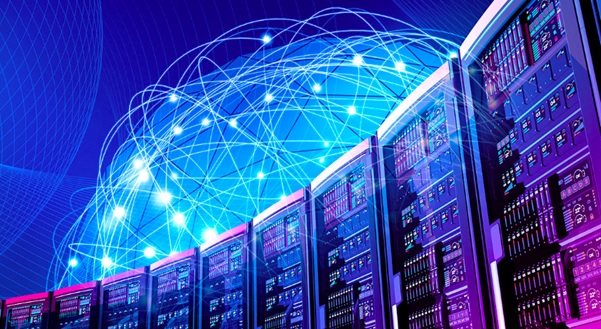
In an era where data-driven insights and computational precision reign supreme, the role of High Performance Computing (HPC) has never been more crucial. HPC, with its ability to process massive amounts of data at unprecedented speeds, is unlocking new frontiers in research, industry, and innovation. This blog aims to unravel the potential of High Performance Computing, exploring its evolution, applications, and the transformative impact it holds for the future of computational excellence.
The Evolution of High Performance Computing
As we embark on this journey to unveil the power of HPC, it is essential to trace its evolutionary path. The roots of HPC can be found in the early efforts to solve complex mathematical equations and simulations. However, it was during the mid-20th century that the true seeds of HPC were sown with the advent of supercomputers.
The race for processing power saw milestones like the CDC 6600, designed by Seymour Cray in the 1960s, which held the title of the world’s fastest computer for several years. The quest for faster computation continued, leading to the development of vector processing, parallel computing, and the establishment of supercomputing centers worldwide.
Fast forward to the present, and we find ourselves in an era where exascale computing, capable of performing a billion billion calculations per second, is within reach. The journey from room-sized mainframes to compact, massively parallel systems showcases not only the evolution of hardware but also the ever-growing demand for computational capabilities.
Applications Beyond Boundaries
High Performance Computing isn’t confined to the realm of theoretical computation; its impact extends far beyond, permeating diverse industries and revolutionizing their operational landscapes. Take healthcare, for instance, where HPC plays a pivotal role in genomics research, drug discovery, and personalized medicine.
In the financial sector, complex simulations powered by HPC are unraveling intricate market trends, aiding in risk analysis, and optimizing trading strategies. Weather forecasting, another arena where precision is paramount, leverages HPC to model atmospheric conditions and predict natural disasters with greater accuracy.
The exploration of outer space, climate modeling, and the design of aerodynamic structures are just a few more examples showcasing the versatility of HPC applications. It’s not merely about speed but the ability to process intricate data sets that were once deemed impractical, if not impossible.
The Building Blocks of High Performance Computing
At the core of every high-performance computing system lie several fundamental components, working in tandem to deliver unparalleled computational power. The processor, often referred to as the “brain” of the system, has evolved from single-core to multi-core architectures and is now venturing into the realm of many-core designs.
Memory, too, has undergone transformative changes, with advancements such as High Bandwidth Memory (HBM) and Non-Volatile Memory (NVM) playing pivotal roles in enhancing data access speeds. Accelerators, like Graphics Processing Units (GPUs) and Field-Programmable Gate Arrays (FPGAs), are employed to offload specific tasks, optimizing overall performance.
Interconnects, the communication highways between components, have witnessed innovations like InfiniBand and Intel’s Omni-Path Architecture, enabling faster data exchange between nodes in a parallel computing environment. These building blocks, meticulously designed and integrated, form the backbone of HPC systems, allowing them to crunch numbers at astonishing rates.
Parallel Computing – The Engine Driving HPC’s Speed
The true heartbeat of High Performance Computing lies in its ability to parallelize tasks, enabling the simultaneous execution of multiple operations. Parallel computing is not merely a feature; it’s the driving force behind the unprecedented speed and efficiency of HPC systems.
Understanding parallel computing involves breaking down complex problems into smaller, manageable tasks that can be solved concurrently. This paradigm shift from sequential to parallel processing has been instrumental in achieving remarkable computational performance. Various parallel programming models, such as MPI (Message Passing Interface) and OpenMP, provide the frameworks needed to harness the power of parallelism.
However, implementing parallelism is not without its challenges. Coordination between tasks, data synchronization, and load balancing require careful consideration to fully realize the potential of parallel computing. Overcoming these challenges has led to the development of sophisticated algorithms and methodologies, pushing the boundaries of what’s achievable in the world of HPC.
Challenges and Opportunities in the HPC Landscape
While HPC continues to propel us into the future, it is not without its hurdles. Scalability, the ability to efficiently handle growing workloads, remains a critical challenge. As computational demands surge, ensuring that HPC systems can seamlessly expand to meet these requirements becomes imperative.
Energy efficiency is another concern, especially as the scale of HPC systems increases. Developing energy-conscious architectures and optimizing algorithms to minimize power consumption are ongoing areas of research. The complexity of programming for HPC, often requiring specialized skills, is also a barrier that researchers and developers are actively addressing.
Yet, within these challenges lie opportunities for innovation. The pursuit of exascale computing has sparked advancements in hardware design, cooling technologies, and energy-efficient architectures. Collaborative efforts across academia, industry, and government sectors are driving initiatives to address scalability and programming complexity, opening doors to new possibilities in computational research.
HPC in the Cloud – A Paradigm Shift
The landscape of High Performance Computing is undergoing a significant transformation with the rise of cloud computing. Cloud-based HPC solutions offer unparalleled accessibility, scalability, and flexibility. Researchers and organizations can leverage computing resources on-demand, eliminating the need for large capital investments in dedicated hardware.
The cloud’s pay-as-you-go model allows users to scale up or down based on their computational needs, making HPC resources more accessible to a broader audience. However, the shift to the cloud comes with considerations, including data security, latency, and the intricacies of adapting existing HPC workflows to a cloud environment.
Despite these challenges, the cloud represents a paradigm shift in how computational resources are accessed and utilized. The synergy between HPC and the cloud opens new avenues for collaboration, research, and innovation across various disciplines.
Beyond Teraflops – Emerging Trends in HPC
As we stand on the brink of a new computational era, it’s essential to explore the emerging trends that promise to redefine the capabilities of High Performance Computing. Quantum computing, with its potential to perform complex calculations at speeds unimaginable by classical computers, is capturing the imagination of researchers and industry leaders alike.
Exascale computing, the next frontier in HPC, aims to break the barrier of a quintillion calculations per second. The integration of artificial intelligence into HPC workflows is unlocking new possibilities in data analytics, pattern recognition, and decision-making.
These trends signal not only the continuous evolution of HPC but also its convergence with other cutting-edge technologies. The interplay between quantum computing, exascale systems, and AI is shaping the future of computational excellence, promising solutions to complex problems that were once considered insurmountable.
In the grand tapestry of technological progress, High Performance Computing stands as a beacon of computational excellence. From its humble beginnings to the sophisticated systems of today, HPC has evolved into a driving force behind groundbreaking advancements. As we unravel the potential of HPC, we witness its transformative impact across industries, the meticulous interplay of its building blocks, and the challenges and opportunities that define its landscape.
The journey doesn’t end here. With parallel computing fueling its speed, HPC is poised to overcome challenges, embrace opportunities, and redefine computational boundaries. The integration of HPC into the cloud signifies a shift in how we access and utilize computational resources. Emerging trends, from quantum computing to exascale systems and AI integration, beckon us toward a future where computational excellence knows no bounds.
In the symphony of data and algorithms, HPC plays a leading role, harmonizing precision, speed, and innovation. As we navigate this landscape, it’s not just about the teraflops or petaflops but the endless possibilities that High Performance Computing unveils, propelling us into a future where computational excellence becomes the standard, not the exception.


